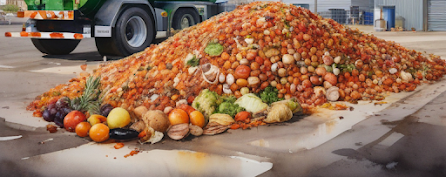Waste Not, Want Not: A 2024 Look at Waste-to-Energy's Cash-Saving Potential
Back then, the idea of turning trash into treasure (or at least, energy that saves you cash) was fresh and exciting. But has it lived up to the hype? Let's dig in (pun intended)!
The Good News: Waste-to-Energy via Anaerobic Digestion is Here to Stay
Good news first – waste-to-energy (WtE) hasn't gone belly-up! In fact, it's become a cornerstone of many countries' waste management strategies. Landfill costs are still on the rise, and WtE via anaerobic digestion offers a compelling alternative, generating electricity or heat from waste that would otherwise just pile up.Beyond the Bottom Line: The Green Factor
But WtE via anaerobic digestion isn't just about saving money on your energy bill. It also helps reduce our reliance on landfills, which are environmental hazards. Plus, WtE facilities can capture harmful emissions, minimizing their impact on the environment.So, is WtE a Magic Bullet? Not Quite.
Now, here's the not-so-shiny side. WtE isn't without its critics. There are concerns about air pollution from some WtE facilities, and the burning process doesn't completely eliminate waste.
The Future of WtE: Balancing Cash and Green
The key to moving forward is optimization. Newer WtE technologies are cleaner and more efficient. Additionally, the focus is shifting towards a waste hierarchy. This means prioritizing waste reduction, reuse, and recycling before resorting to WtE.The Takeaway: Waste Less, Save More!
Here's the bottom line: WtE is a valuable tool, but it shouldn't be our only solution. We, as individuals and communities, need to reduce waste generation at the source. This, combined with cleaner WtE technologies, is the path to a truly sustainable future where we can save money and the planet at the same time.So, the next time you toss something out, think twice! Remember, reducing waste is the ultimate money-saving (and planet-saving) strategy!
Waste-to-energy schemes could save cash - Gazette Live
GREEN chiefs on Teesside say food waste-to-energy schemes could prove a money saver for cash-strapped councils.
As many as 1,000 energy plants could be built in the UK using Anaerobic Digestion (AD), which uses food and other types of organic waste to produce power.
Last week top Defra minister Lord Henley, who was visiting Teesside, said the Government supported AD.
The following video may be of interest but is not linked to this article.
In January, industries from manufacturing to construction will attend an event by Wilton-based RENEW and Manufacturing Advisory Service North-east to find out about the opportunities from the emerging sector.
The following is a more recent YouTube video on this subject:
Work on the northeast’s first commercial AD plant will begin in a few weeks, fuelling hopes the scheme will be a springboard for more like it.
Newton Aycliffe company Emerald Biogas will take commercial food waste and turn it into green electricity.
RENEW chiefs claim advances in the technology to produce renewable gas as well as electricity could lead to a revolutionary “closed loop” system for councils, turning waste from kerbside collections into fuel for their fleets.
The Renewable Heat Incentive (RHI), a cashback scheme that comes into force next year, is also expected to galvanise the industry.
The next step for RENEW is a study with Hartlepool, Middlesbrough and Stockton councils to gauge the potential for AD on Teesside.
“The scale we are talking about makes AD plants large enough and too expensive to ship from the continent, so there’s a very real need for local production,” said Peter Walsh, RENEW’s energy manager.
“That means more work for manufacturing, fabrication, installers processing, equipment installation, civil works.
“We want to see much more local content, not importing of technology. Large fabrication structures, tanks, pipework instrumentation - these are all skills and industries that people are familiar with on Teesside.
“There haven’t been the financial incentives until now - although they’re not as high as we wanted,” he added.
Speaking during his tour of world-leading plastics recycling plant Biffa Polymers, Redcar, Lord Henley, who has overall responsibility for UK waste and recycling, said: “We are keen to encourage AD, and we’re working hard with other departments to do what we can.”
Antony Warren, from Emerald Biogas, said: “Landfill tax makes it competitive to take food out of the waste stream for companies.
“We need this to take off, there’s a push from the Government and all the marketplace incentives are there to make it happen.”



















0 Comments